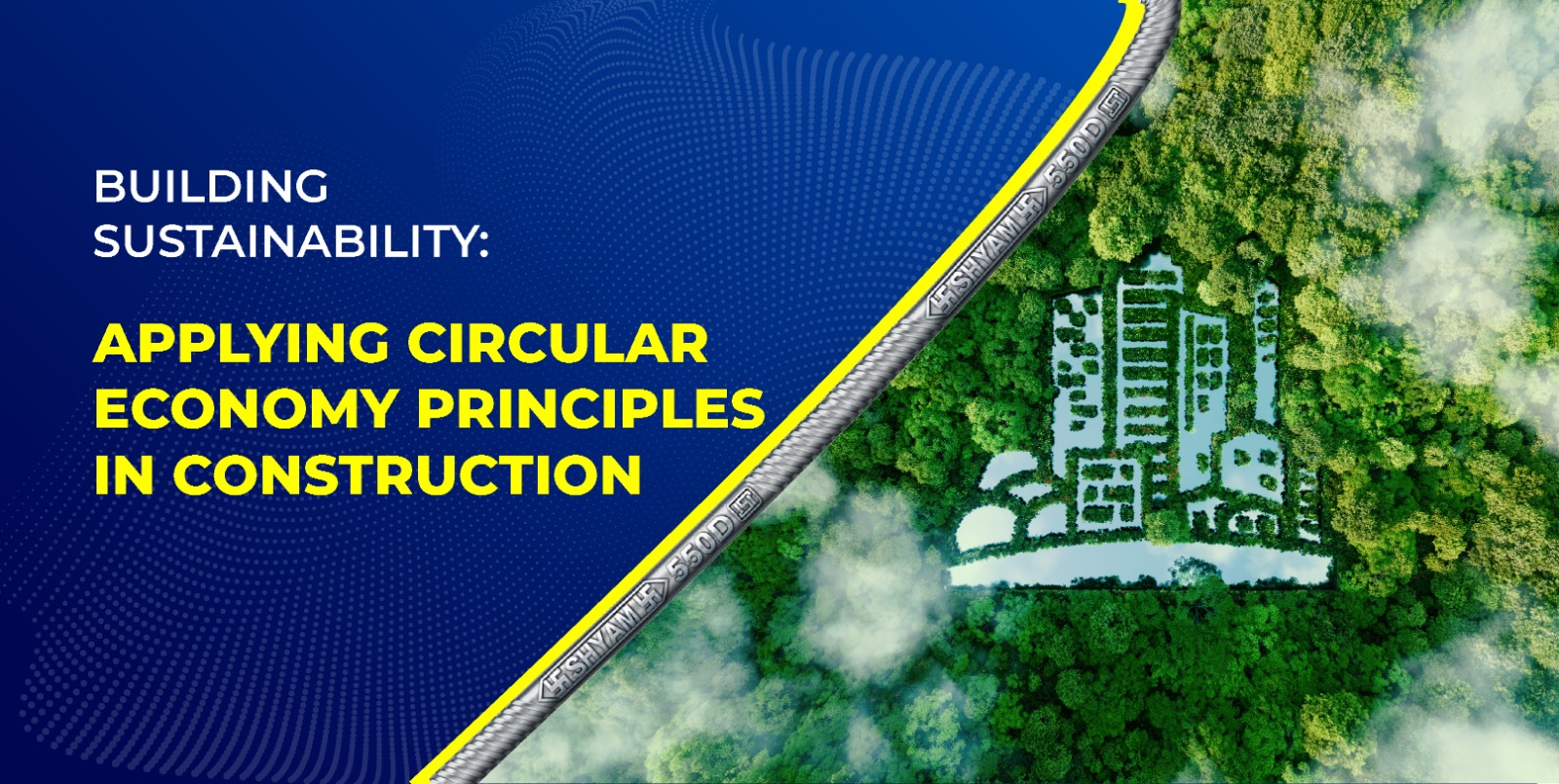Building Sustainability: Applying Circular Economy Principles in Construction
The construction industry is a major global player with enormous environmental and economic impacts. It’s also known for producing a significant amount of waste and consuming vast amounts of resources. This is where circular economy principles come into play. By embracing these principles, the top construction company in Tripura can transform into a more sustainable, resource-efficient sector. Let’s explore in detail how circular economy principles can be applied to the construction industry.
- Design for Deconstruction:
Circular economy in construction starts with the design phase. Structures should be designed for easy disassembly and material recovery. This approach extends the lifespan of construction materials, reducing waste. In other words, buildings should be constructed with the idea that they will eventually be deconstructed or adapted, rather than demolished.
- Reuse and Recycle Materials:
Reusing and recycling construction materials is fundamental to a circular economy. Components like timber, steel, and glass can often be salvaged and repurposed in new projects. This not only reduces waste but also lessens the demand for new raw materials, which are often extracted and processed with significant environmental impacts.
- Prefabrication and Modular Construction:
Embracing prefabrication and modular construction methods can significantly reduce waste. These methods allow for the efficient use of materials, reducing offcuts and waste generated on-site. Prefabricated components can also be disassembled and reused, extending their useful life.
- Digitalization and BIM (Building Information Modeling):
Digital tools like BIM enable architects, engineers, and builders to optimize designs and materials, minimizing waste and energy consumption. With BIM, it’s possible to create highly accurate 3D models that help identify potential issues in the design phase, preventing costly errors during construction.
- Promote Local Sourcing:
Reducing transportation distances for building materials minimizes the carbon footprint. Sourcing materials locally can be an eco-friendly and cost-effective strategy, as it supports regional industries and reduces the emissions associated with long-distance transport.
- Lifecycle Assessment:
Conducting a lifecycle assessment of construction projects helps identify potential areas for resource efficiency and waste reduction. This assessment considers the entire life of a building, from material extraction to demolition or reuse, allowing for better decision-making during construction.
- Long-lasting and Adaptable Structures:
Constructing buildings that are designed to have a long lifespan and can be adapted for different purposes reduces the need for new construction. Experts who provides the best TMT material in Tripuraquotes that such structures are not only sustainable but also economically viable in the long run.
- Renovation and Restoration:
Encouraging the renovation and restoration of existing buildings instead of demolition and new construction helps preserve resources and cultural heritage. Historical buildings, in particular, have unique architectural and cultural value that should be conserved.
- Waste Reduction and Management:
Implement effective waste management practices on construction sites to ensure that materials are sorted, recycled, and disposed of responsibly. This not only reduces the environmental impact but also saves costs by minimizing waste removal.
- Certification and Regulations:
Governments and industry bodies can play a crucial role in promoting circular economy principles in construction through regulations and certifications. By setting standards for sustainable construction practices and offering incentives for circular initiatives, they can encourage the industry to embrace eco-friendly methods. By adopting these circular economy principles, the construction industry can reduce its environmental footprint, contribute to sustainable future and conserve valuable resources. Shyam Steel supports this transition by providing high-quality, durable building construction materials in Tripura that align with the goals of a circular economy, making it easier for the industry to embrace these eco-friendly practices. As circular economy concepts continue to gain momentum, the construction industry can lead the way in sustainable building practices that benefit both society and the environment. Building sustainability is not just an environmental responsibility; it’s also a smart business strategy for a brighter and more resilient future.

